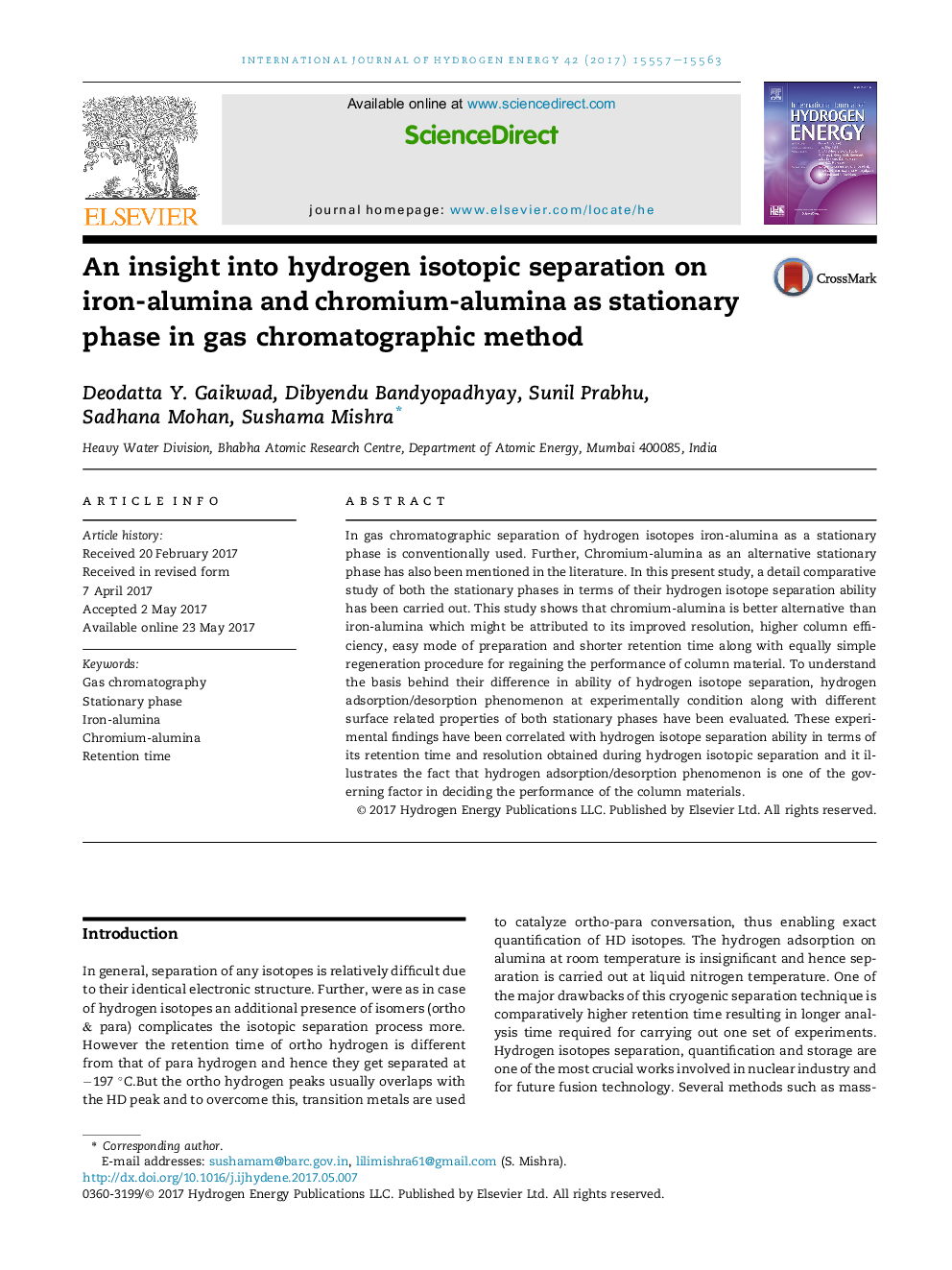| Article ID | Journal | Published Year | Pages | File Type |
|---|---|---|---|---|
| 5146582 | International Journal of Hydrogen Energy | 2017 | 7 Pages |
Abstract
In gas chromatographic separation of hydrogen isotopes iron-alumina as a stationary phase is conventionally used. Further, Chromium-alumina as an alternative stationary phase has also been mentioned in the literature. In this present study, a detail comparative study of both the stationary phases in terms of their hydrogen isotope separation ability has been carried out. This study shows that chromium-alumina is better alternative than iron-alumina which might be attributed to its improved resolution, higher column efficiency, easy mode of preparation and shorter retention time along with equally simple regeneration procedure for regaining the performance of column material. To understand the basis behind their difference in ability of hydrogen isotope separation, hydrogen adsorption/desorption phenomenon at experimentally condition along with different surface related properties of both stationary phases have been evaluated. These experimental findings have been correlated with hydrogen isotope separation ability in terms of its retention time and resolution obtained during hydrogen isotopic separation and it illustrates the fact that hydrogen adsorption/desorption phenomenon is one of the governing factor in deciding the performance of the column materials.
Related Topics
Physical Sciences and Engineering
Chemistry
Electrochemistry
Authors
Deodatta Y. Gaikwad, Dibyendu Bandyopadhyay, Sunil Prabhu, Sadhana Mohan, Sushama Mishra,
